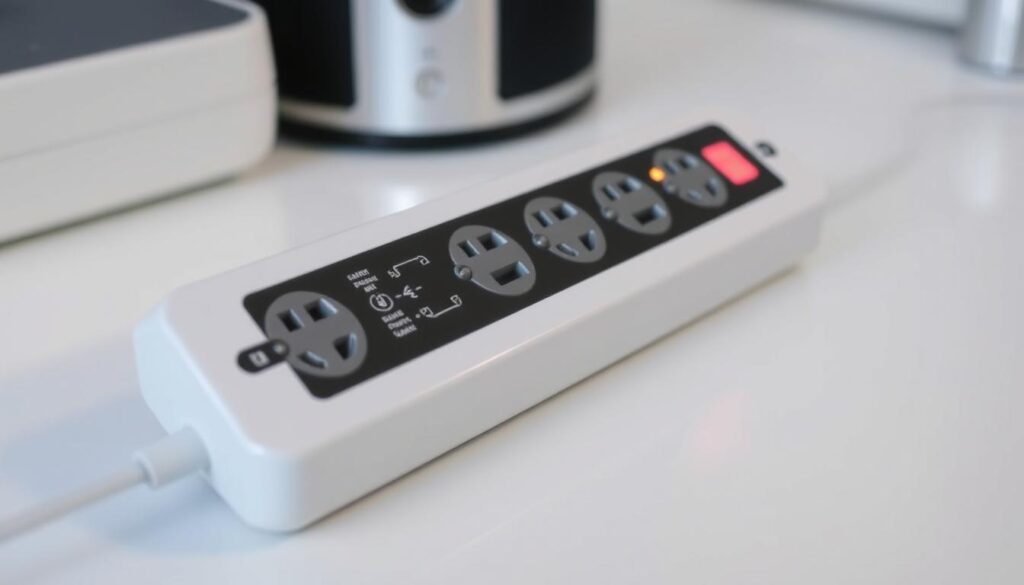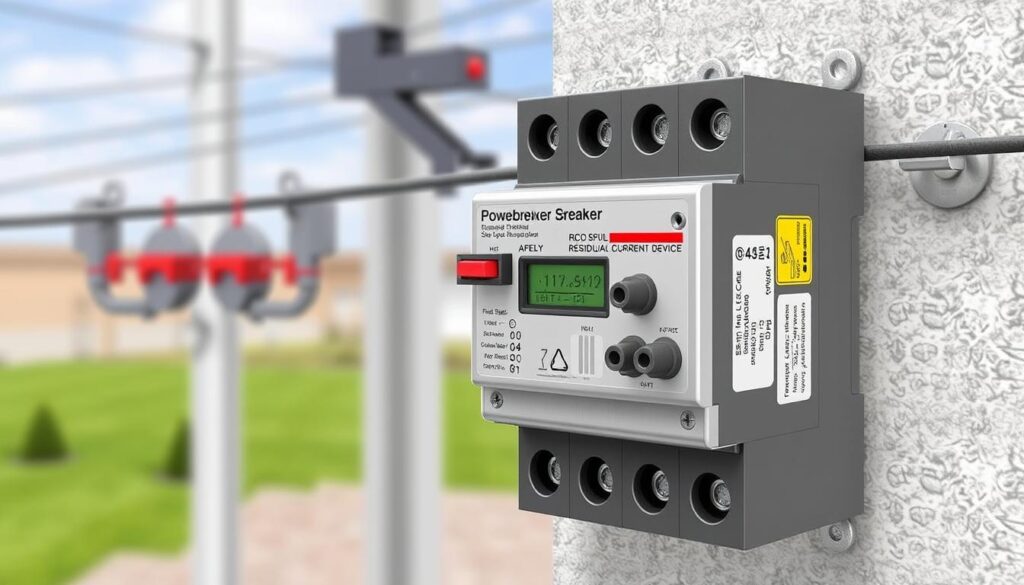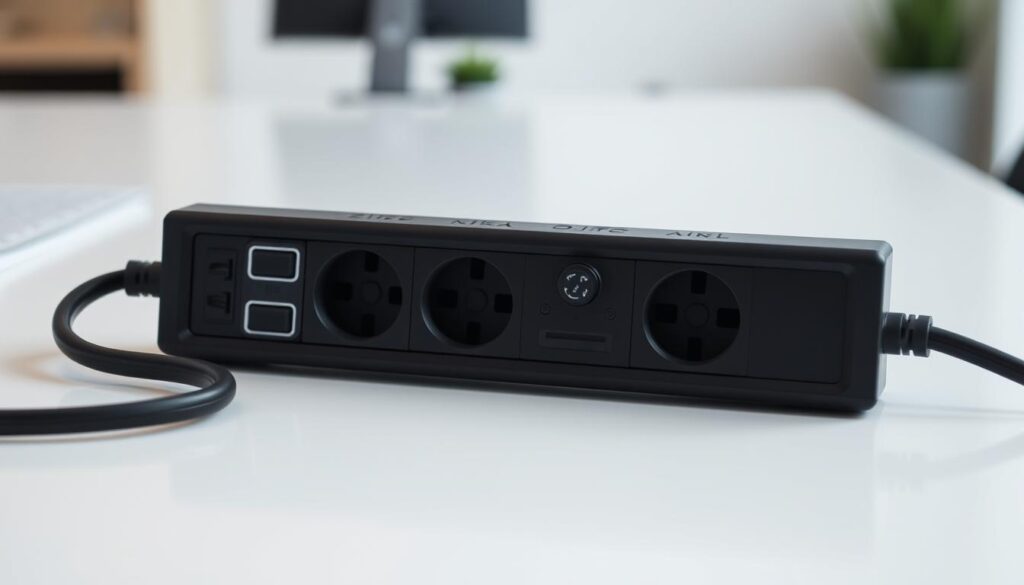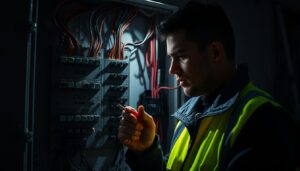Are you aware of the risks that power surges pose to your valuable electronic devices and appliances at home? A sudden surge can damage your equipment, leading to costly repairs or even render them unusable. This is where a surge-protected extension spur comes into play, offering a layer of protection against such electrical surges.
Fitting a spur with surge protection is a straightforward process that can significantly enhance the safety of your home’s electrical setup. By understanding how to properly install and use a surge-protected extension spur, you can safeguard your devices and ensure your home remains a safe environment.
Key Takeaways
- Understand the importance of surge protection for your home’s electrical devices.
- Learn how to choose the right surge-protected extension spur for your needs.
- Discover the step-by-step process for fitting a surge-protected spur.
- Identify key safety considerations when working with electrical sockets.
- Recognise the benefits of proper installation for effective surge protection.
What Are Surge-Protected Extension Spurs?

A surge-protected extension spur is a specialised electrical fitting that combines a standard fused connection unit with surge protection technology. These units are designed to protect your home appliances from voltage spikes and electrical surges.
Understanding Surge Protection Technology
Surge protection technology works by detecting abnormal voltage spikes and diverting excess electricity away from connected appliances. This prevents damage to sensitive electronics, ensuring your devices remain safe.
How They Protect Your Home Appliances
Surge-protected extension spurs safeguard your appliances by absorbing excess voltage during power surges or lightning strikes. This additional layer of protection is crucial for valuable home appliances like refrigerators, washing machines, and entertainment systems.
Key Features and Specifications
When selecting a surge-protected extension spur, look for key specifications such as the maximum voltage protection level, response time, and joule rating. Most models feature a 13A rating and come with either switched or unswitched configurations.
How to Fit a Surge-Protected Extension Spur
To ensure a safe and effective installation, it’s crucial to understand the steps involved in fitting a surge-protected extension spur. This process not only enhances the safety of your electrical setup but also protects your appliances from potential surges.
Essential Tools and Materials
Before beginning the installation, gather all necessary tools, including a voltage tester, screwdrivers, wire strippers, and appropriate screws for mounting your new surge-protected extension spur. Having the right tools on hand will streamline the process and ensure a professional finish.
Safety Precautions Before Installation
Safety must be your top priority when fitting any electrical component. Always turn off the power at the consumer unit (fuse box) and verify that the circuits are dead before starting work. This precaution is vital to prevent electrical shock or injury.
Step-by-Step Installation Process
Removing Existing Fixtures
Carefully label all wires when removing existing fixtures to ensure correct reconnection. Pay particular attention to the live, neutral, and earth connections to avoid confusion.
Wiring the New Spur Correctly
The wiring process involves connecting the incoming supply to the correct terminals on the new 13A switched fused spur, following the standard colour coding system: brown for live, blue for neutral, and green/yellow for earth.
Securing and Testing
Secure the mounting box to the wall, connect the wires to the appropriate terminals on the surge-protected unit, and then attach the faceplate. Testing is crucial after installation; restore power at the consumer unit and verify that the spur is functioning correctly.
Common Installation Mistakes to Avoid
Common mistakes include incorrect wire gauge selection, improper earthing, exceeding the maximum load capacity of the 13A rating, and failing to secure all connections tightly. Being aware of these potential pitfalls will help ensure a successful installation.

Types of Surge-Protected Extension Spurs
Surge-protected extension spurs come in different types, catering to various needs and applications. You can choose from a range of products that offer unique features and benefits.

Powerbreaker RCD Spurs and Their Benefits
Powerbreaker is a trusted manufacturer of high-quality RCD spurs that combine residual current device protection with surge protection capabilities for comprehensive electrical safety. Their RCD spurs provide extra protection against earth leakage faults, making them ideal for use in various settings.
Metal Clad vs. White Plastic Finishes
You can choose between Metal Clad and White Plastic finishes for your surge-protected spurs. Metal Clad spurs offer superior durability, making them suitable for workshop, garage, or industrial environments where physical damage is more likely. White Plastic finishes, on the other hand, provide a more aesthetically pleasing appearance, blending seamlessly with standard white switches and sockets.
Passive Protection Options
Passive protection systems work continuously without requiring user intervention, providing reliable protection against unexpected power surges. These systems are designed to safeguard your appliances and electrical setup.
Choosing the Right Amp Rating for Your Needs
When selecting the appropriate amp rating, consider the power requirements of your connected appliances. Most domestic applications use 13A rated spurs, but specialised equipment may require different ratings. Ensure you choose the right amp rating for your specific needs.
When comparing different product specifications, pay attention to the maximum surge current capacity and response time, as these factors determine how effectively the unit will protect your valuable appliances. Consider the IP rating when installing in kitchens, bathrooms, or outdoor areas where moisture resistance is important.
Conclusion
Surge protection is no longer a luxury, but a necessity for modern homes, and a surge-protected extension spur is a great place to start. By installing a 13A surge-protected fused spur, you can ensure the longevity of your valuable electronic devices. This simple yet effective solution provides essential protection for your home appliances against damaging power surges.
When selecting a surge-protected extension spur, consider factors such as amp rating, finish type, and additional protection features based on your specific requirements. Many suppliers offer fast delivery services for surge protection products, with customer reviews providing valuable insights into product quality and performance.
By following the installation guide and considering your options carefully, you can enjoy continued reliability and peace of mind regarding your electrical setup. Whether you choose a metal-clad or white plastic finish, ensure your selected product meets British safety standards.



